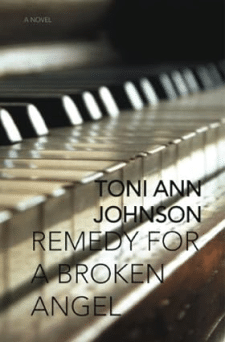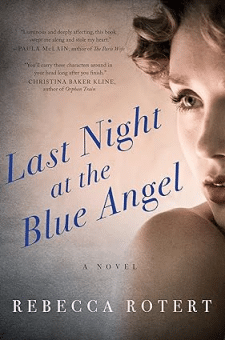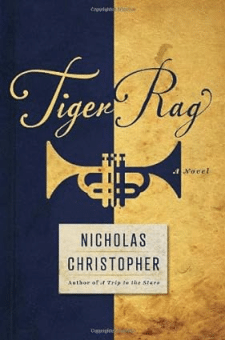.
.
For over twenty years, publishing quality jazz-themed fiction has been a mission of Jerry Jazz Musician. Hundreds of short stories have appeared on the pages of this website, most all of which can be accessed by clicking here.
A substantial number of novels and stories with jazz music as a component of the story have been published over the years, and the scholar David J. Rife has written short essay/reviews of them, which he has compiled in two valuable resources, Jazz Fiction: A History and Comprehensive Reader’s Guide (2008), and a recently published sequel, Jazz Fiction: Take Two. (Several of the stories published on Jerry Jazz Musician are included).
Rife’s work is impressive and worth sharing with Jerry Jazz Musician readers. With his cooperation, essay/review excerpts from Take Two will be published on a regular basis.
In this initial edition, Rife writes about three novels that explore challenges of the mother/daughter relationship.
.
.
___
.
.
.
…..Jazz Fiction: Take Two is the sequel to Jazz Fiction: A History and Comprehensive Reader’s Guide (2008). The earlier work filled a pressing need in jazz studies by identifying and discussing 700 works of fiction with a jazz component.
…..This work picks up where that one left off, around the turn of the 21st century, and surveys over 500 works of jazz-inflected fiction that have appeared since. None of these works, to my knowledge, have been discussed in this context.
…..The essay-reviews at the center of the book are designed to give readers a sense of the plots of the works in question and to characterize their debt to jazz. The entries were written with both the general reader and the scholar in mind and are intended to entertain as well as inform. This alone should qualify Jazz Fiction: Take Two as an unusual and useful reference resource.
.
-David J. Rife
.
.
___
.
.
In this edition, Rife writes about three novels that explore challenges of the mother/daughter relationship.
.
.
[Nortia Press, 2014]
Toni Ann Johnson’s Remedy for a Broken Angel is a good place to start a melancholy discussion of the inevitably fraught relationship between mothers and daughters. The story dramatizes an unbearably intense conflict between Serena and her daughter ArtImeza (“Artie”), both of whom are exotically attractive, highly intelligent, artistically gifted, and—to use the vernacular—hate each other’s guts. With good reason, as we slowly realize: colossal egotism, sexual competition, and the long arm of the past challenge the bonding of mother and daughter. We can almost sympathize with Serena when we discover that she had been adopted by an unloving mother, but our sympathy is compromised when Serena rejects—disinherits!—Artie to pursue a career in jazz. What a tangle of emotions we feel when we learn that Serena’s first CD is a resounding success but sadly titled Mothers and Daughters. But not all is lost when we consider Serena’s resonant name, the “angel” in the book’s title, and the fact that both gals’ lives are dominated by the music of Charles Mingus. In fact, both of them have dogs named Mingus, one that seems to do a little butt-wiggle of joy when he hears the music. If a movie is ever made of the novel, I hope it will be called Mothers and Daughters and have a soundtrack dominated by Mingus’s “Reincarnation of a Lovebird.”
.
[William Morrow, 2014]
Reconciliation between mothers and daughters isn’t really at issue in Rebecca Rotert’s Last Night at the Blue Angel, in which the young daughter of a jazz singer struggles with the myriad challenges to her own emotional growth. Like almost every young person, she is vastly confused over the difficulty in finding out who she is. At one point, she even asks Skylark, of the famous jazz song, “Do you have anything to say to me?” She has an epiphany of sorts when she realizes that her mother—and artists and women in general—is forced by the circumstances of her sex to perform at life rather than simply live it. This idea is complicated by her somber belief that she will always live in her mother’s shadow, that she will never have a life of her own. Think here, if you will, of the masks performers must adopt in order to gratify their audiences.
.
[Dial Press, 2013]
The mother and daughter in Nicholas Christopher’s Tiger’s Rag bear little resemblance to those in the previous two stories. They are older, for one thing, and confronting a different set of complications in their lives. They have been estranged for several years, but circumstances now demand that they interact in uncomfortably close proximity—the insides of a car and several motel rooms—for a few weeks as they drive from Florida to Manhattan, where the mother, a respected psychiatrist, is scheduled to present a paper. Both women are frazzled by life. Mom is distraught by the very painful divorce she is going through, and her daughter Devon has failed as a jazz artist, succumbed to drug addiction, and nervous about the prospect of reinventing herself as a jazz journalist. But as they approach their destination, they gradually warm toward each other and move, slowly to be sure, toward a loving reunion. Enthusiasts of jazz fiction will be gratified to learn that this reconciliation is enabled by a jazz event deep in their family past involving Buddy Bolden and his legendary cylinder. And that’s as close to a plot spoiler as I’m going to get today.
.
.
Excerpted from Jazz Fiction: Take Two, by David J. Rife (with James Langdon)
.
.
___
.
.

David Rife is Professor Emeritus in English at Lycoming College in Williamsport, Pennsylvania, where he taught American literature and modern fiction for 35 years. He is the author of Jazz Fiction: A History and Comprehensive Reader’s Guide (2008), Jazz Fiction: Take Two (2022), and co-editor of The Jazz Fiction Anthology (2009). He has served as associate editor of Brilliant Corners: A Journal of Jazz & Literature since its inception in 1996. His writings have appeared in such publications as American Literary Realism, Dictionary of Literary Biography, The Annual Review of Jazz Studies, Journal of Modern Fiction, and The Oxford Companion to Crime and Mystery Writing. Now in deep retirement, he divides his time between Pennsylvania and Florida while working on studies of jazz literature and also on the role of the Ojibwe Indian in American literature.
.
___
.
.
Click here to read “Ballad,” Lúcia Leão’s winning story in the 65th Jerry Jazz Musician Short Fiction Contest
Click here to read more short fiction published on Jerry Jazz Musician
Click here to read The Sunday Poem
Click here for information about how to submit your poetry or short fiction
Click here for details about the upcoming 66th Jerry Jazz Musician Short Fiction Contest
Click here to subscribe to the Jerry Jazz Musician quarterly newsletter (it’s free)
Click here to help support the continuing publication of Jerry Jazz Musician, and to keep it ad and commercial-free (thank you!)
.
.
___
.
.
Jerry Jazz Musician…human produced (and AI-free) since 1999
.
.
.




































